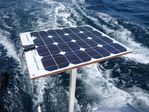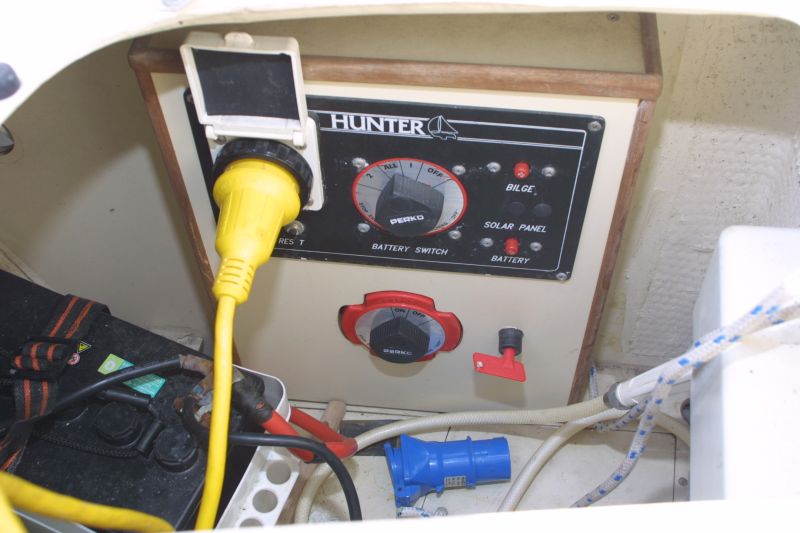Electricity
-
See advice
Whether for navigation (instruments, lights,) for manoeuvres (windlass,) or for
comfort (refrigeration, lighting,) it is impossible to do without electricity. All these
consumers must be connected to a power supply (12 or 24 volts) that must be
maintained. If this can be done without returning to land, we really do achieve the
independence and autonomy sought at sea.
-
See advice
DETERMINING THE CORRECT BATTERY CAPACITY
Through three examples we compile an electrical balance from three boats equipped differently. Adapt it to your particular case.
Example No.1
Day trip, return to port at night
Example No.2
Equipment Instant consumption Daily use Daily Consumption
Amperes Hours Amperes
Comfort
Refrigeration 4 6 24
Pressurized water 8 1 8
Music 1 2 2
Electronics
Automatic Pilot 5 2 10
GPS/Card Reader 2 6 12
VHF Emission 4 ¼ 1
VHF reception/watch 0.1 10 1
Sounder 1 4 4
Central Navigation 1.5 6 9
Total Consumption 24h 67 Amperes
Day trip, night mooring
-
See advice
KNOW
The standard diode battery splitter causes a voltage drop of about 0.6volts regardless of the current passing through it. However, the batteries need a voltage between 14.4 and 15 volts to be charged correctly. If a splitter is interposed between the standard alternator that delivers 14.2volts it is insufficient for recharging batteries with 13.6volts. To remedy this we offer electronic distributors without voltage drop. If you are seeking optimum charging go for these models. A load balancer is given for a maximum current, it must be chosen accordingly. For example a 70A alternator must accept, at least this current. -
See advice
MONITOR YOUR BATTERIES
Contrary to the service pack, the capacity of the engine battery is not an important factor. For the latter, simply monitor the voltage. Inversely, one must constantly monitor the battery pack. In this case go for a manager which controls voltage and current and also gives the motor battery voltage. If you have two service battery units, it is necessary to take a double manager that controls all parameters (voltage, current,) and also indicates the motor battery voltage.BATTERY MANAGEMENT
We have seen that to establish the electrical balance, we must know the currentdrawn by each appliance and, for -
See advice
220 VOLT CIRCUITS
It is the riskiest circuit on boars. It is necessary to treat it with caution. If your boat has a 220volt circuit, make sure it is fitted with a differential circuit breaker, a general breaker a waterproof port socket and an electrical switchboard. If it is not equipped, or badly we provide the equipment (sockets, breakers…) to help you achieve it.
Une prise de quai doit répondre à des normes strictes.12 OR 24VOLT CIRCUITS
The 12 (or 24)


